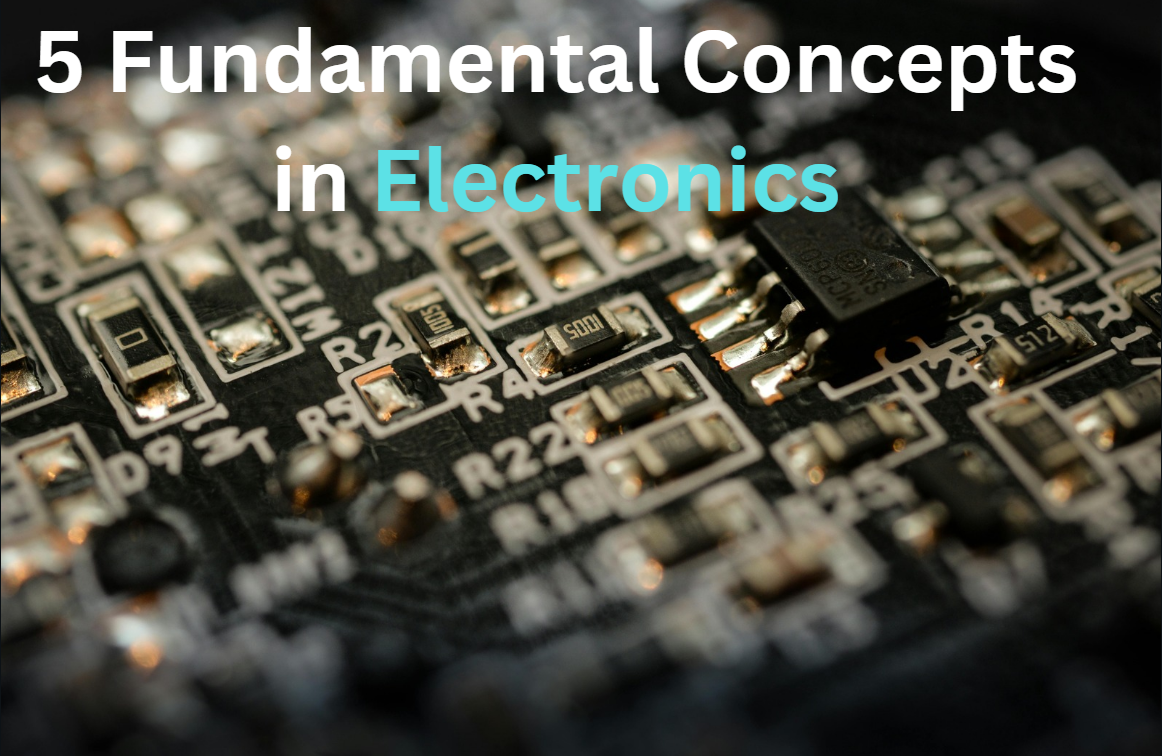Electronics is a cornerstone of modern technology, playing a crucial role in everything from household gadgets to sophisticated industrial systems. Understanding the basic concepts in electronics is essential for anyone interested in the field of electrical engineering or technology development. This article will cover five key principles of electronics, making complex ideas accessible and easy to understand.
What is Electronics?
Defining Electronics
Electronics is the branch of physics and engineering that deals with the study and application of electrical devices that control the flow of electrons. This field encompasses a wide range of components and systems used to manage and manipulate electric currents for various purposes.
The Importance of Electronics
Electronics is integral to modern life, underpinning technologies such as computers, smartphones, medical devices, and more. Understanding the basic principles of electronics allows engineers and technologists to innovate and improve these critical systems.
Semiconductor Physics: The Heart of Electronics
What are Semiconductors?
Semiconductors are materials with electrical conductivity between that of a transmitter and a protector. Silicon is the most widely used semiconductor material due to its excellent properties and abundance. Semiconductors form the foundation of most electronic devices, including transistors and diodes.
How Semiconductors Work
The unique properties of semiconductors allow them to control the flow of electricity in circuits. By doping, or adding impurities to the semiconductor, manufacturers can alter its conductivity. This ability to control electron flow makes semiconductors ideal for building components like transistors, which are essential for amplifying and switching electronic signals.
Diodes and Transistors: Building Blocks of Electronics
Understanding Diodes
Diodes are components that allow current to flow in one direction only, acting as a one-way valve for electrical current. They are used in various applications, including rectifiers that convert AC to DC, signal demodulators, and protection circuits.
Exploring Transistors
Semiconductors are the major structure blocks of present day electronic gadgets. They function as amplifiers and switches, enabling the creation of complex circuits. There are two principal kinds of semiconductors: Bipolar Intersection Semiconductors (BJTs) and Field-Impact Semiconductors (FETs). Each type has its specific applications, strengths, and weaknesses.
Operational Amplifiers (Op-Amps): Versatile Electronic Components
What is an Operational Amplifier?
An operational amplifier, or op-amp, is a type of integrated circuit that can amplify voltage. Op-amps are used in a wide variety of electronic applications due to their versatility and performance characteristics. They are commonly found in signal processing, filtering, and control systems.
Applications of Op-Amps
Op-amps are used in many applications, including analog computing, audio equipment, and instrumentation. Their ability to perform mathematical operations such as addition, subtraction, integration, and differentiation makes them invaluable in complex electronic systems.
Digital Electronics: The Basis of Modern Computing
Introduction to Digital Electronics
Digital electronics deals with circuits that process digital signals, which have discrete levels representing binary values (0 and 1). This branch of electronics is foundational to computers, digital communications, and many automated systems.
Key Components in Digital Electronics
Logic Gates: The basic building blocks of digital circuits, performing simple logical operations like AND, OR, and NOT.
Flip-Flops: Memory elements that store binary data, used in timing and control circuits.
Microprocessors and Microcontrollers: Central processing units that perform computations and control tasks in digital systems.
Power Electronics: Managing Electrical Energy
What is Power Electronics?
Power gadgets is the field of hardware that arrangements with the transformation and control of electrical power. It encompasses the design and implementation of systems that convert electrical energy from one form to another, such as from AC to DC.
Applications of Power Electronics
Power electronics are crucial in various applications, including power supplies, motor drives, renewable energy systems, and electric vehicles. By efficiently managing electrical energy, power electronics help improve performance and reduce energy consumption in these systems.
Outbound Links for Further Reading
- Semiconductor Basics on Wikipedia
- How Diodes Work
- Transistor Basics
- Operational Amplifiers
- Digital Electronics Overview
Conclusion
Electronics is a vast and dynamic field that forms the backbone of modern technology. From the fundamental properties of semiconductors to the versatile applications of operational amplifiers and the crucial role of digital electronics, understanding these basic principles is essential for anyone interested in this exciting area. As technology continues to advance, the field of electronics will remain at the forefront of innovation, driving progress and enabling new possibilities.
You Can Also Visit:
- 7 Essential Concepts of Circuit Theory
- Application to the WhatsApp Support Team _ WhatsApp Unbanned – Application Sample
- 5 Key Principles of Electromagnetism – ICxpert



[…] 5 Fundamental Concepts in Electronics – ICxpert […]
[…] 5 Fundamental Concepts in Electronics – ICxpert […]
[…] · 5 Fundamental Concepts in Electronics – ICxpert […]
[…] 5 Fundamental Concepts in Electronics – ICxpert […]
[…] 5 Fundamental Concepts in Electronics – ICxpert […]
[…] 5 Fundamental Concepts in Electronics – ICxpert […]
[…] 5 Fundamental Concepts in Electronics – ICxpert […]